Does it feel like you’re always “behind the times” when it comes to digital marketing? Just when you start to master Facebook comes Instagram. Now TikTok is edging out Instagram and Clubhouse is making its way through the social media ranks too. From new social channels to debuting publications, organizations are spending a considerable amount of time just keeping up with the latest and greatest marketing tactics. But it’s not just the channels that organizations have to grapple with. For colleges in particular, each department and program has to utilize the channel that best fits their needs, alongside content that individualizes their message while staying cohesive to the overall brand.
With so many dividing factors, colleges have numerous considerations in their integrated marketing strategy, and little room for error. Digital marketing is mandatory for colleges to thrive, and has become even more crucial during the pandemic. But conquering digital marketing and ensuring everything runs in unison isn’t impossible. In several episodes of our Higher Education Coffee and Conversation podcast, we talk to guests about marketing tactics, so we’ve compiled their best practices to achieve integrated marketing alignment at your institution.
Be Authentic
With so many institutions largely targeting the same bank of students, it’s no surprise that college materials start to feel formulaic and resemble each other. When materials, print and digital, don’t tell the story of that institution, they lack authenticity and look disconnected from the university.
“Integrated marketing gets down to the core of what the key messages are for an institution and ensuring that the same message is communicated – whether it’s the president making a speech in the community or the communications department writing an article about a student success, or a collateral piece that markets the university,” said Cathy Baur, Administrator Emeritus at California State University San Marcos.
Baur and her team take a holistic approach to communications, threading messaging throughout their messaging, particularly as it relates to enrollment management. Those communications are about much more than the two or four years that a student may be attending the school.
“When we’re looking at the student life cycle, we’re thinking about it from the perspective of a student in third grade that makes a visit to the college all the way to the experience of our alumni,” said Baur. “We’re focused on ensuring that throughout that life cycle, people are getting the same messaging and that they’re experiencing the university in that same manner, to build brand loyalty and create an environment that gains an additional commitment to the university.”
Think Backwards
It’s easy to get tunnel vision when you’re putting together a marketing strategy. With so many moving pieces, it’s important to step back and ensure that your marketing is consistently considered from the student perspective. That was a lesson Chrissy Gascone, the Interim Dean of Instruction and Student Services at Santiago Canyon College Division, learned during her marketing intensive for the organization’s non-credit programs.
When Gascone set out to begin the marketing campaign, she realized there were several pieces that were not in place to hit the ground running like she had hoped. “It took a lot more planning and set-up than I would have imagined,” said Gascone.
In the marketing campaign exploration, they began to uncover issues that were likely thwarting students, like non-mobile-friendly websites and intrusive advertisements. Keep the student perspective top-of-mind as you develop marketing strategies and tactics.
Expect Surprises

Messaging adoption is hard to predict when you set out on your integrated marketing campaign. Setting yourself up for surprises, good and bad, is a great way to remain nimble as you see results from your marketing efforts.
Gascone shares, “We just got a new monthly synopsis of what our marketing did last month, and I was really surprised that our first YouTube video from our ESL campaign had 92,000 views. That was a lot more than I was expecting. And ESL is one of the areas that surprises me the most, as we weren’t sure how well a media campaign would do.”
Though the campaign results surprised them, Gascone and her team adapted its ESL outreach as a result. “That’s one of the things I liked about the marketing – we learn things that we absolutely did not know, or things that we thought were correct, and use information to plan for future classes, online endeavors, and more.”
Prepare for the Work and Ask for Help

A resounding anecdote we heard from our podcast guests was the amount of work and support that was needed to lift the integrated marketing efforts. In our conversation with Alex Karvounis, Creative Director of MiraCosta College, he talked about the experience of the mounting to-dos that his team had not anticipated.
“Initially we put down all the things that would need to be done in order to launch it, and a couple different bullet points ended up being in a long list of things that had to get done,” said Karvounis.
We also heard from Erin Green, Director of Sales Enablement for Local IQ, who said “When it makes sense for your organization, you should be getting marketing solutions from a marketing professional. Having somebody that eats, sleeps and breathes all the ins and outs of a marketing campaign is really important.”
Start with the Basics

When the need for an integrated marketing campaign arises, a lot of college leaders wonder where to start. Green recommends that the starting point for most programs is find out if you have a strong presence, and think about it from the perspective of the student, parent, or life-long learner. “Whoever your particular target market is, think about what the first step they’re going to take when they’re researching a program,” said Green.
Typically, this starts with Google. That means improving your Google presence, rankings, and functionality should come before any of the other, fancier marketing initiatives. “Google knows more about us than our friends and family. We tell Google things that we don’t tell anybody else,” said Green. “So, if you’re done with your job and you’re getting ready to go back to school, or if you lost your job and you need more education, Google is the first place that you turn.”
Stay Consistent
When you start to see results from your marketing campaign, you might be tempted to ease off the gas pedal. Don’t be tempted, says Green. “We’ll hear [from clients] ‘it’s enrollment time, let’s boot up our campaign and then let’s boot it back down’. And we say, ‘that’s not how the student journey looks right now.’”
More than 50% of potential students, regardless of their generation, take a year or more to do their research. That means if somebody is considering the idea of school over the course of a year and, most often, only looking at 3-4 schools, there needs to be consistency in your marketing efforts.
“Consistency is key. Turning on and turning off is not the strategy that you want. You need to find something that is consistent and sustainable,” shares Green.
It Costs Money to Make Money

Lastly, we can’t talk about integrated marketing without discussing the budget. As Green puts it, “Sometimes colleges are only focused on solutions that are at the very bottom of the funnel, but there’s no scenario where you’re going to spend less money and magically get more enrollment.”
The amount of effort, scale, scope and size of your marketing program is going to have a direct impact on your enrollment. Despite the urge to cut, Green emphasizes that the competition is also cutting, which means, now is the time to double down because there’s market share to be grabbed.
Does your institution need an integrated marketing strategy that boosts enrollment, nurtures brand loyalty, and increases retention? Contact us today.
10 Ways To Create A Sense Of Community At Your College
How Secret Shopping Can Improve Your College Marketing Strategy










